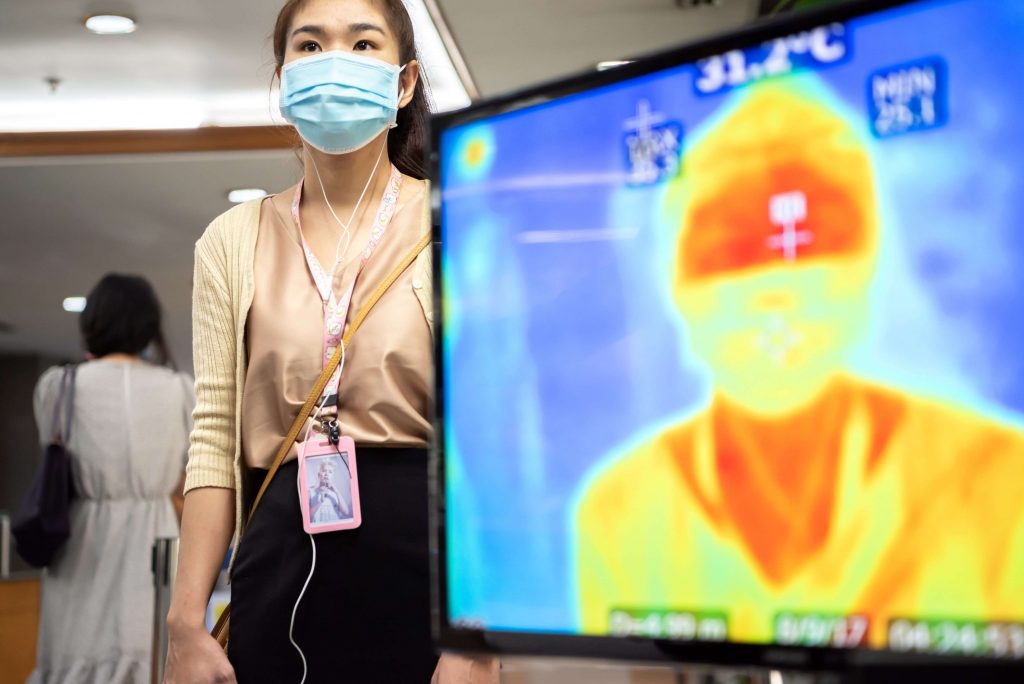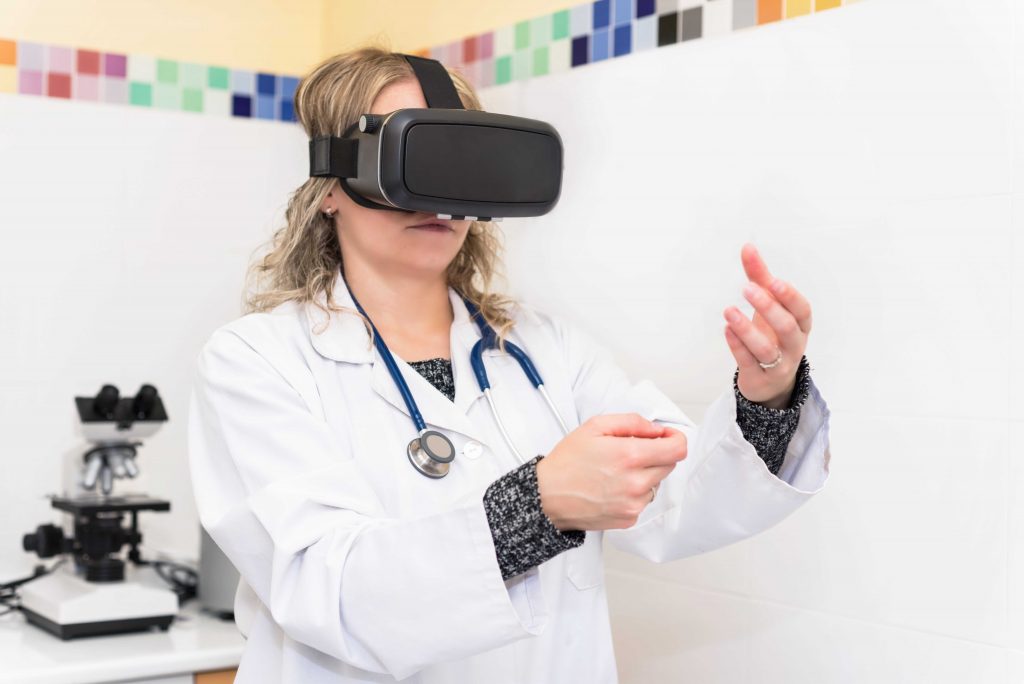A Roadmap for Cost-Effective Management of Technology Solutions Over the Long Term
By Taw North, RCDD, LEED AP
In the past few years, healthcare facilities have faced a massive disruption, and COVID-19 has been only part of the reason. From infection control and spread mitigation to the rising cost of energy and changing patient needs and expectations influenced by retail habits, hospitals and clinics are facing near-revolutionary demands to operate more efficiently and effectively, as well as friendlier.
Geothermal and photo-voltaic systems. Dashboard monitoring systems. Patient monitoring systems. Smart parking guidance systems. Telehealth. Improved access to Electronic Health Information
As much as patients are surrounded by care when they arrive, they are surrounded by technology that goes beyond the actual tools used to treat patients.

While federal programs like the American Rescue Plan and Inflation Reduction Act have allocated funds and tax incentives to spur the transition to a more energy efficient operation or improve how care is delivered, it has still left healthcare leaders with a dizzying array of technology investment choices, many without direct reimbursements for the care delivered.
Technology investment choices are often challenging because of the lens in which the technology is viewed. Often seen through its end use, the cost of the technology can often overshadow the patient or clinical benefit of the technology. The end-use lens can also cloud how the technology works on a systemic level to improve the patient-family experience and improve patient outcomes.
Zooming out, though, a use-case lens can be applied that makes the navigation through technology choices smoother and more strategic. Utilizing this use-case approach, discussions become more strategic and allow a broader range of stakeholders to guide organizations through investments that provide the right fit and desired patient benefit.
A strategic roadmap
Technology solutions always promise a benefit, but the basic fact is that not every technology is necessary. For example, while telehealth provides immense value at a critical access hospital in Texas where specialists may be hours away, it makes less sense for a hospital in Florida where most patient resources are available within a 90-minute drive.
While the upfront costs can appear manageable, unmapped downstream costs like an added systems analyst or IT infrastructure upgrades can diminish the expected benefit the solution promises. The market also may not necessitate such a technology solution, like in the telehealth example.

The key challenge to appropriately evaluating the benefit of a solution is gathering the information from people at various care and operational levels while also managing a process that is not slowed with too many decisionmakers. It is known that any technology solution will have an impact on operations and information technology, but the more granular impact on clinicians, BioMed, facilities and maintenance, or patient representation may not be fully understood until engaged.
The use-case approach can help organizations map a strategic approach to evaluating the impact and benefits of technology solutions while also managing the project implementation process effectively and efficiently:
- Establish the desired outcomes: At the project’s start, define the outcomes that must be achieved and develop use cases. Select the appropriate technologies that enable these use cases.
- Be future-focused: Look beyond current applications to plan for future technology.
- Plan for upgrades: Determine how to upgrade or enhance the current systems.
- Identify soft costs: Think of capital costs versus operational costs (i.e., appropriate staffing to maintain or operate, component replacement, software upgrades).
- Avoid gaps/overlaps: Use a responsibility matrix to determine what is in the owner’s budget and the construction budget to identify any gaps or overlaps and avoid unanticipated costs.
- Build in contingencies: Contingencies help cover changes in technology.
- Prioritize the investments. Priorities inform decision making.
At each stage in this process, certain voices can lend insight to the impact and benefit a solution provides, enabling the decisions to be more informed and strategic. The key is not limiting the number of influencers too early in the process. By leveraging the experience and expertise of a broad representation of the organization, those with final authority can trust they are making the most informed and strategic decision for the organization.
Understanding impact
For many organizations, seeing technology beyond what it enables is often the biggest blind spot they experience. Where a new campus or patient tower is evaluated both for its capital costs and operational costs over a 10-year period, such a complementary evaluation is missed on the technology side.
Are more people needed to execute the solution? What are the associated licensing costs? Will the hardware need upgrading when the software is obsolete? What are the cybersecurity implications?
When adding to or implementing new systems, it’s imperative to understand how the solutions will impact staffing to fully comprehend the soft costs. This includes possible day-to-day desktop support as well as programming reconfiguration to match use to changing clinical or operational models of care.
Incorporating IT early in a project can help fully paint the picture of soft costs and avoid surprises later in the project. While contractors can bring their expertise in A/V systems and security, for example, IT brings knowledge in specialized issues such as building the network and installing the network switches, wiring, computers, printers, and phone system.
With the teams working in tandem at the same stages in the process, they can avoid misunderstandings and mistakes by ensuring everyone is speaking the same language. For example, to a contractor, infrastructure can mean powering data cables where an IT team may define infrastructure as network switches.
A responsibility matrix can also mitigate assumptions by vetting them and replacing them with facts. While some unknowns may exist until equipment is purchased, by starting early with a framework, teams can ensure nothing is missed.
Looking to the future
Healthcare, as an industry, is sometimes criticized for being too conservative when it comes to technology investments in back-end systems. However, the margins in healthcare can make it difficult to make such investments outside of direct patient care.
Still, when hospitals are not up to date with current technology, it can be difficult to think about how to utilize and integrate future technology.

Technology moves so fast that when evaluating the long-term effectiveness of such solutions, organizations need to see beyond the current state of operations to fully see how the systems can be upgraded or expanded to accommodate future uses.
Avoiding proprietary systems enables organizations to stay current with upgrades. Proprietary systems usually don’t provide a path for incorporating advanced technology because it is not backwards compatible with what companies have currently. This often forces organizations to defer upgrades.
By choosing more open systems that accommodate scalability and customization, organizations have more ability to stay current with small upgrades and avoid expensive upgrades in the future. As systems and buildings become “smarter,” the data will become more valuable. Investing in systems now that are open for data sharing will enable more smart building use cases in the future.
With any investment in technology solutions, managing costs on all levels is key, from the upgrades and expansion to the actual project design and implementation to the management and operation of the solution. Rather than a disruption, though, technological solutions should be an enhancement, elevating how organizations can serve both staff and patients as well as patient families.
Organizations often find it difficult to see past a seven-year horizon when evaluating needs and the technological solutions to address those needs. By changing the lens from an end-use to a case-use perspective, though, teams can leverage the insights from a broad range of stakeholders efficiently to make decisions that are informed and provide a roadmap for cost-effective management of technology solutions over the long term.
Taw North, RCDD, LEED AP, is Principal/Regional Director with TLC Engineering Solutions®. He can be reached at taw.north@tlc-eng.com.
